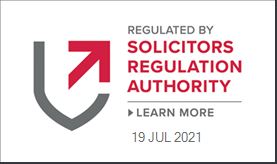Complex regional pain syndrome (CRPS) is a poorly understood condition in which a person experiences persistent severe and debilitating pain.
It is difficult to estimate exactly how common CRPS is, as many cases may go undiagnosed or misdiagnosed. It can begin at any age, including childhood. This being said, however, the average age for symptoms to start is around 50-years-old, with 3 out of 4 sufferers reported to be women.
There is no known cure for CRPS, however, a combination of physical treatments, medication and psychological support can help to manage symptoms.
Some of the main treatments used to treat CRPS are outlined below.
Medication
There are several medicines available that can help treat CRPS, however, none of them are licensed for use in the UK. This means that these medicines may not have undergone clinical trials to see if they are effective and safe in treating CRPS specifically. However, these medications will have a licence to treat another condition and will have undergone clinical trials for this. Doctors may choose to use an unlicensed medication if it is effective and the benefits of treatment outweigh any risks. Some of the main pain relief treatments include:
- Non-steroidal anti-inflammatory drugs (NSAIDs) – These over-the-counter painkillers, such as ibuprofen, are usually the starting point for treatment. They can help to reduce pain caused by the original injury that triggered CRPS. However, NSAIDs are unlikely to directly reduce CRPS pain.
- Anticonvulsants – Usually used to treat epilepsy, gabapentin and pregabalin are the most widely used anticonvulsants for treating CRPS. Common side-effects include drowsiness, dizziness and weight gain. There is also a small increased risk of suicidal thoughts.
- Tricyclic antidepressants (TCAs) – Originally designed to treat depression, amitriptyline and nortriptyline are the most widely used TCAs for treating CRPS. These medications can often aid sleep, a side effect that some sufferers regard as a benefit.
- Opioids – For those experiencing severe pain, opioids such as codeine and morphine can sometimes provide relief. The benefits of using opioids may sometimes outweigh the risks. Unfortunately, these medications are often not very effective in treating CRPS.
Spinal cord stimulation
If medication fails to lessen pain, spinal cord stimulation may be recommended. This invasive procedure involves a battery-operated device being implanted under the skin on the stomach or buttocks and attached to electrodes placed close to nerves in the spine. The device produces mild electrical pulses that are sent to the spinal cord. The pulses change how pain is experienced; for example, a tingling sensation may be felt in the part of the body that usually hurts, which can mask pain. The level of stimulation can be adjusted as pain improves or gets worse, and the device removed if necessary.
Sympathetic nerve block
An injection of anaesthetic next to the spine can interrupt activity of the sympathetic nerve and increase blood flow. This can offer temporary pain relief, however, is not considered to have long-term benefits.
Mirror visual feedback and graded imagery
Performing certain movements can be difficult for CRPS sufferers as information needed by the brain is often missed or confused. Techniques, such as mirror visual feedback, mirror box therapy and graded motor imagery aim to improve movement by retraining or ‘tricking’ the brain into thinking symptoms have disappeared.
Physical rehabilitation
This involves relying on different treatments to enable CRPS sufferers to gradually increase activity and functionality without making the pain worse. Techniques include gentle movement, such as stretches in water (hydrotherapy) or light, weight-bearing exercises. Desensitisation is a commonly used technique focusing on how unaffected body parts feel when touched with various materials compared to affected areas. The process can be uncomfortable or painful initially, however, may eventually reduce sensitivity in the affected body part.
Pain management
Due to the complex nature of CRPS, different health professionals will be involved in care pathways, such as a GP, physiotherapist, psychologist, occupational therapist and pain relief therapist. These specialists work individually or jointly on Pain Management Programmes (PMPs), usually based in local hospitals or clinics, and treatments can include such things as cognitive behavioural therapy (CBT).
Self-management
There are many approaches aimed at helping CRPS sufferers to take more control of their own condition. These include:
- Education – to fully understand the complex condition
- Support – to stay active and continually use the affected body part
- Learning – new techniques to manage increases in pain
- Relaxation – practising yoga or meditation to improve quality of life
- Activity management – to avoid peaks and dips in movement due to pain
- Home rehabilitation – incorporating desensitisation into daily life
- Access – joining local support groups and networks
*Please note, this information should not be taken as medical advice. Brian Barr Solicitors are not medical experts, therefore, this page is for information purposes only.
Click here to read our CRPS case studies.



